Black Bear Hunting 101: How to Hunt Bears in Manitoba This Spring
Spring has arrived. The ice gear is packed away, the last of the snow is melting, and across Manitoba, hunters are shifting their focus. For many, that can only mean one thing — black bear season is on the horizon. It’s a special time to be in the woods, sitting in a stand as the world wakes up around you, with the sounds of migratory birds filling the air and the forest coming back to life.
In this blog we are going to cover the A-Z's of getting started as a black bear hunter in Manitoba, Enjoy!
There’s something deeply humbling about hunting a bear. It’s a pursuit that demands patience, preparation, and a strong sense of respect for the animal — but for those willing to put in the effort, it can be one of the most rewarding experiences in the woods.
Here in Manitoba, we’re fortunate to have a healthy black bear population, a long spring black bear hunting season, and incredible opportunities spread across a wide range of habitats. Whether you’re just getting into bear hunting or considering it for the first time, this guide will walk you through the basics, outline why it’s important to our province’s wildlife management goals, and explain why bear meat deserves a place at your table.

Why Hunt Bears in Manitoba?
Black bears are thriving across Manitoba. From the aspen parklands and boreal forest to the remote reaches of the north, they’ve adapted well to a variety of landscapes. With few natural predators and a steady food supply, their numbers continue to grow in many areas.
This is where regulated hunting plays a key role. By participating in Manitoba’s spring and fall bear seasons, resident hunters contribute to managing bear populations at sustainable levels — helping reduce human-wildlife conflicts and easing pressure on moose and deer fawn populations in critical areas.
And then there’s the meat. Bear meat is rich, flavourful, and surprisingly versatile. Slow-roasted shoulders, pulled bear sandwiches, spicy sausage — it’s one of the most underrated wild game meats out there. Many Manitoba hunters are also rediscovering the traditional value of rendered bear fat, useful for cooking or crafting.
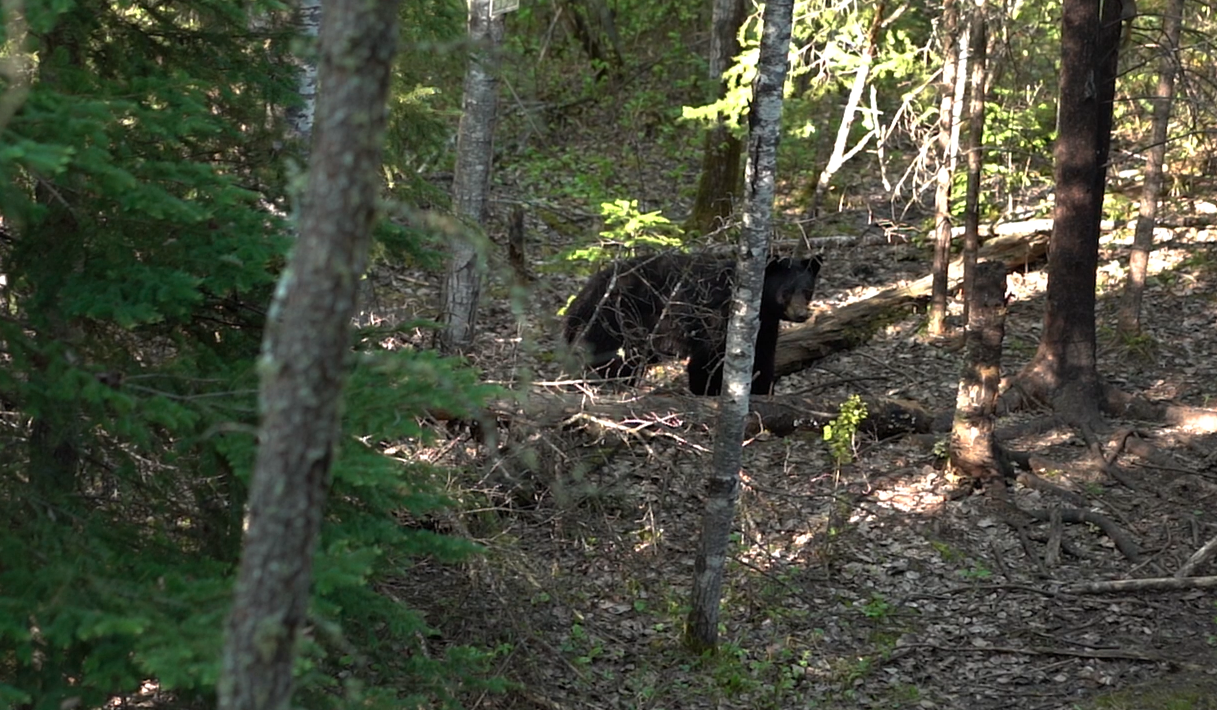
Getting Started: The Ethics of Bear Baiting
Across much of the province, especially in forested zones, the most common and effective way to hunt bears is from a stationary location over a bait. This approach — typically involving hunting from a stand or blind — allows hunters to observe and assess bears carefully before making a decision to harvest.
This method gives hunters an edge in several ways, and it also allows for a far more ethical harvest:
- Controlled Shooting Environment:
- While hunting from a fixed position like a treestand, set over a bear bait with shooting lanes cleared, hunters have the opportunity to prepare well before the moment of truth. With ample time to practice drawing a bow or raising a rifle, you’re able to be fully ready before a shot ever presents itself. This setup is especially ideal for newer hunters or those using archery equipment, offering a calm, controlled environment for a clean, ethical harvest.

- Improved Bear Identification:
- Hunting over a bait site allows you the time and visibility to accurately determine the sex and size of a bear — and most importantly, ensure it’s not a sow with cubs. Bears will often linger at a bait site, giving you ample opportunity to observe their behaviour and decide whether it’s a bear you want to harvest. Trail cameras can be a valuable tool in this process, providing intel on the number of bears visiting your site and helping you identify specific bears well before the hunt begins. This added insight supports a more ethical and informed decision when the moment of truth arrives. Just remember: bears are naturally curious, and trail cameras are often a target of their attention. To protect your gear, consider placing cameras high in a slender tree that’s difficult for bears to climb, or use a sturdy protective box to shield the camera from damage.

- Selective Harvest:
- All in all, hunting over a bear bait provides significantly better visibility and the valuable opportunity to observe and learn the habits of the bears frequenting the area. With the added time to watch their behaviour, assess size and sex, and ensure no cubs are present, the odds stack in your favour for making a confident, informed, and responsible harvest decision. It’s a method that prioritizes patience, preparation, and respect — key pillars of ethical bear hunting.
It’s important to note that this approach is legal and regulated in Manitoba, with specific rules regarding baiting, stand placement, and retrieval. Hunters must follow all provincial guidelines — and doing so not only ensures a fair chase but maintains the integrity of the hunt.
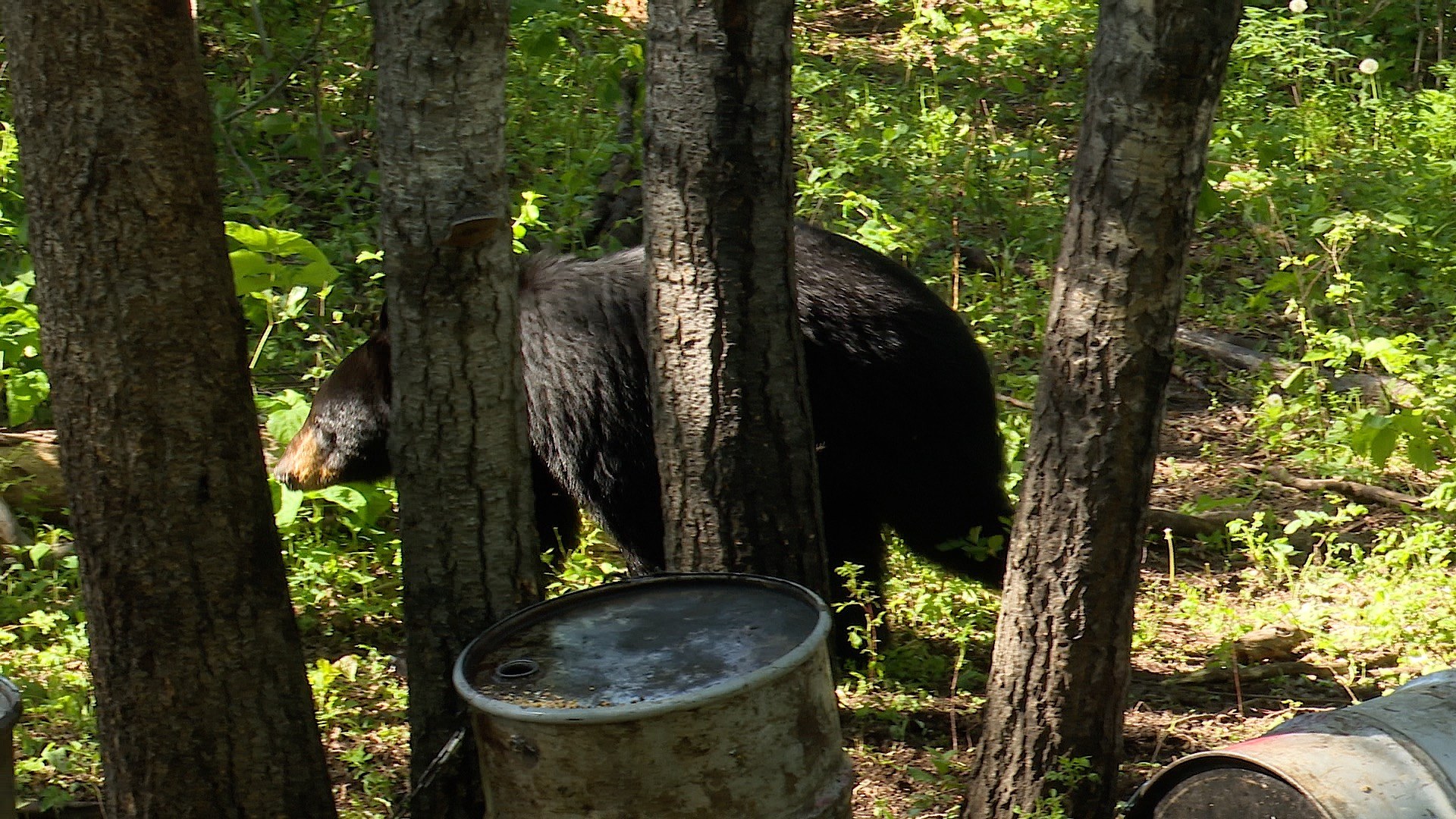
Where Do I Set my Black Bear Bait?
When it comes to setting up a bear bait, we as Manitobans are extremely fortunate. Black bears inhabit virtually every corner of the province. With their widespread distribution and strong population, there are countless opportunities to find success — but of course, some areas are better than others. Let’s take a closer look at what makes for prime bear baiting territory in Manitoba.
Forests: A Bear’s Comfort Zone
Black bears thrive in thick forest cover, and in general, the larger the forest, the more bears you’ll find in that area. These dense woodlands provide shelter, food, and security — the perfect recipe for a productive bait site. Whether you’re hunting in the Interlake, the Duck Mountains, Northern or Eastern Manitoba, large tracts of unbroken forest are always worth exploring.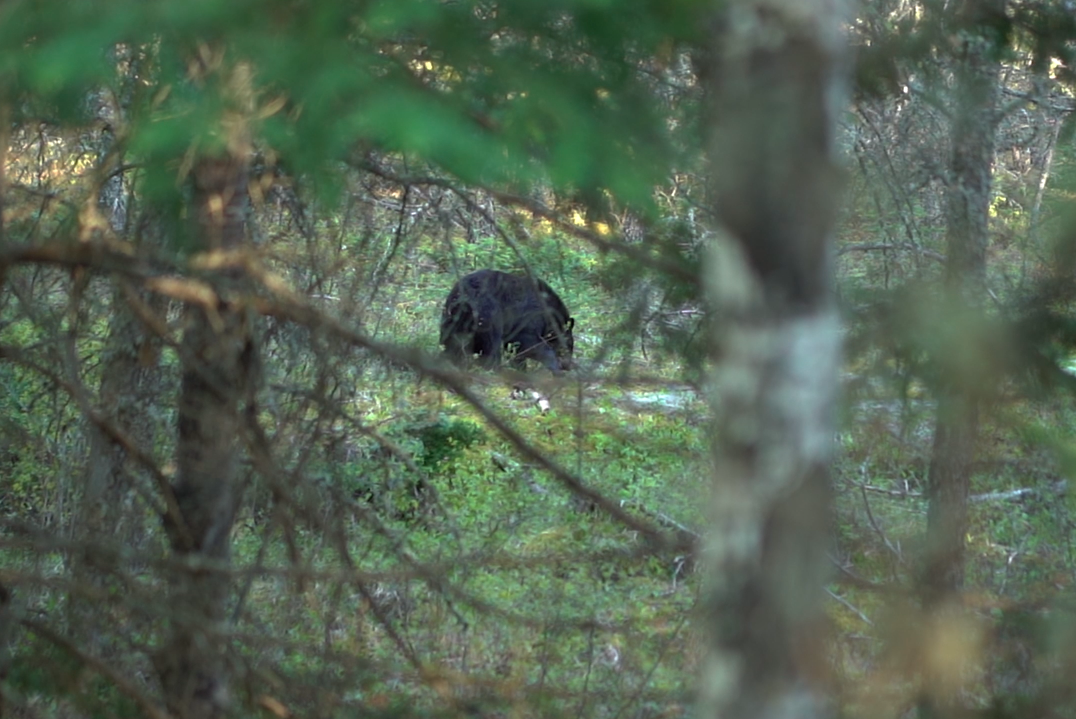
In addition to dense cover, black bears prefer areas with minimal human disturbance. I often refer to bears as “the forest ghosts” — not because they aren’t around, but because even in areas with high populations, visual encounters are rare. Bears are elusive by nature and tend to keep a low profile in the woods, just as we’d prefer not to bump into them unexpectedly.
Focusing your efforts in quiet, remote areas with little human traffic can significantly improve your chances of consistent bait activity. Tranquility and wilderness go hand in hand with black bear habitat.

Water Sources: Key to Bear Territory
Like all wildlife, bears need water — and in Manitoba, that often means swamps. Much of our province is dotted with sprawling swamplands that sweep through the forested landscape, creating ideal habitat for black bears. When scouting bait locations, proximity to water is a major bonus.
Spring Food Patterns: Timing is Everything
Coming out of their winter torpor, black bears are hungry. After months without food, they begin searching for their first meals — often before the spring green-up has even begun.In those early days, natural food sources are limited, which is exactly why this is such a critical time to have your bait site established. If a bear discovers your bait early and finds it to be a reliable food source, there’s a good chance it will return frequently during the pre-green-up window. Once the grass starts to pop, bears shift to feeding on fresh vegetation — but if your bait site is well-placed and consistent, they’ll often continue returning.

When I’m selecting a spot for a bear bait, there are a few things I always look for:
- Swamp Proximity: I prefer to place my bait on or near the edge of a swamp — within a few hundred yards. After gorging at the bait site, bears often seek water. If that water is close by, they’re less likely to wander far, increasing the odds of frequent return visits.
- Thick Cover Nearby: Bears love seclusion. Having dense timber or thick brush nearby allows them to bed down safely and feel comfortable coming and going from the site.
- Fields or Meadows: As spring progresses and bears begin to incorporate greens into their diet, having a meadow or field nearby can be a big plus. These areas often green up faster, offering a natural food source alongside your bait — a smorgasbord that keeps bears hanging around.
What to use as bait?
When it comes to baiting for bears, my approach is simple — find the most effective bait possible, without breaking the bank. One of the best ways to do this is by reaching out to local farmers. Ask if they have any old or spoiled grain they’re willing to part with. Often, you can offer to help out around the farm in exchange, or purchase a mini-bag of grain directly from a farmer or grain elevator for a reasonable price. Another great option is to contact local businesses or bakeries to see if they have any expired bread, pastries, candy, or popcorn they’re looking to get rid of. Many are more than happy to give it away. You can even pop your own popcorn — it’s lightweight, easy to haul, and works great, though popping large volumes can be time-consuming.
One bait ingredient I really like to use is used restaurant grease. Many restaurants are happy to give it away, and bears absolutely love the smell. Just be sure to store and transport it carefully — it gets messy fast. There are also Manitoba-based bear hunting forums and groups online where hunters and wholesalers sell bulk bait specifically for bear season — often at fair prices and in convenient quantities.
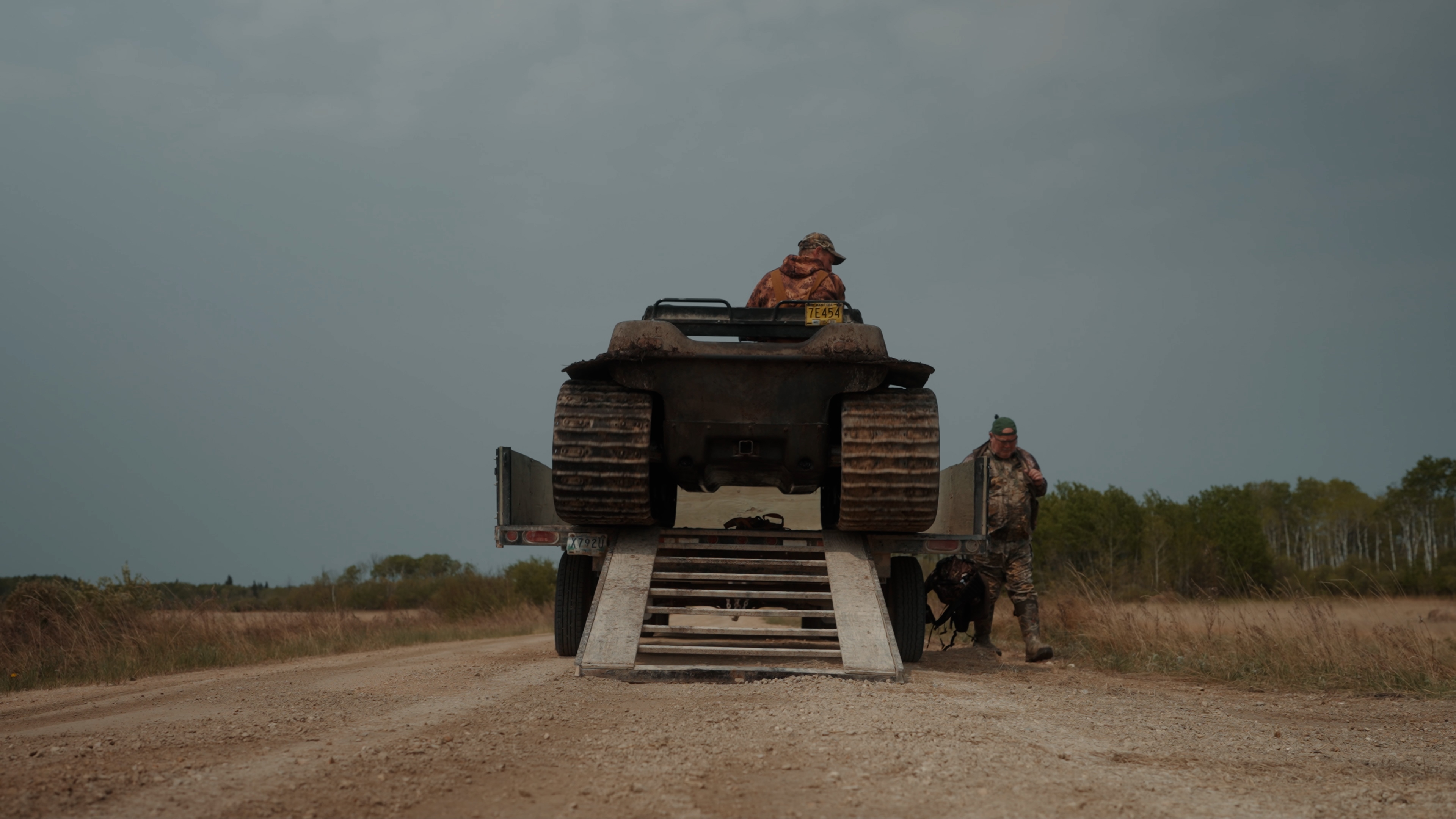
The Secret Weapon: Beavers
If you’re looking to take your bait site to the next level, beavers are like candy for bears. The scent of a beaver carcass can draw in big boars from long distances. They’re one of the most effective attractants out there — especially when placed in combination with your main bait source.
If you don’t have access to beavers yourself, consider reaching out to a local trapper. Many trappers will have a few beavers on hand and may be open to trading, selling, or giving some away for bait.
Important: Be sure to follow all provincial guidelines when it comes to obtaining and using beavers or any animal parts for bait. Manitoba has clear regulations in place, and it’s every hunter’s responsibility to stay within those rules.
How I Build My Bait
Here’s what a typical bait setup looks like for me:
- Start with a 45-gallon drum and fill it with grain as the base.
- Pour in restaurant grease, mixing it with the grain to create an irresistible scent and flavour combo.
- Add variety — bread, donuts, pastries, popcorn, or meat scraps (like butcher trimmings, suckers from the ditch, or beaver when regulations allow) help give the site texture, scent, and options to keep bears returning.
Mixing it up not only keeps the bait site attractive to more bears, but also gives you an idea of what different bears are interested in based on what gets eaten first.
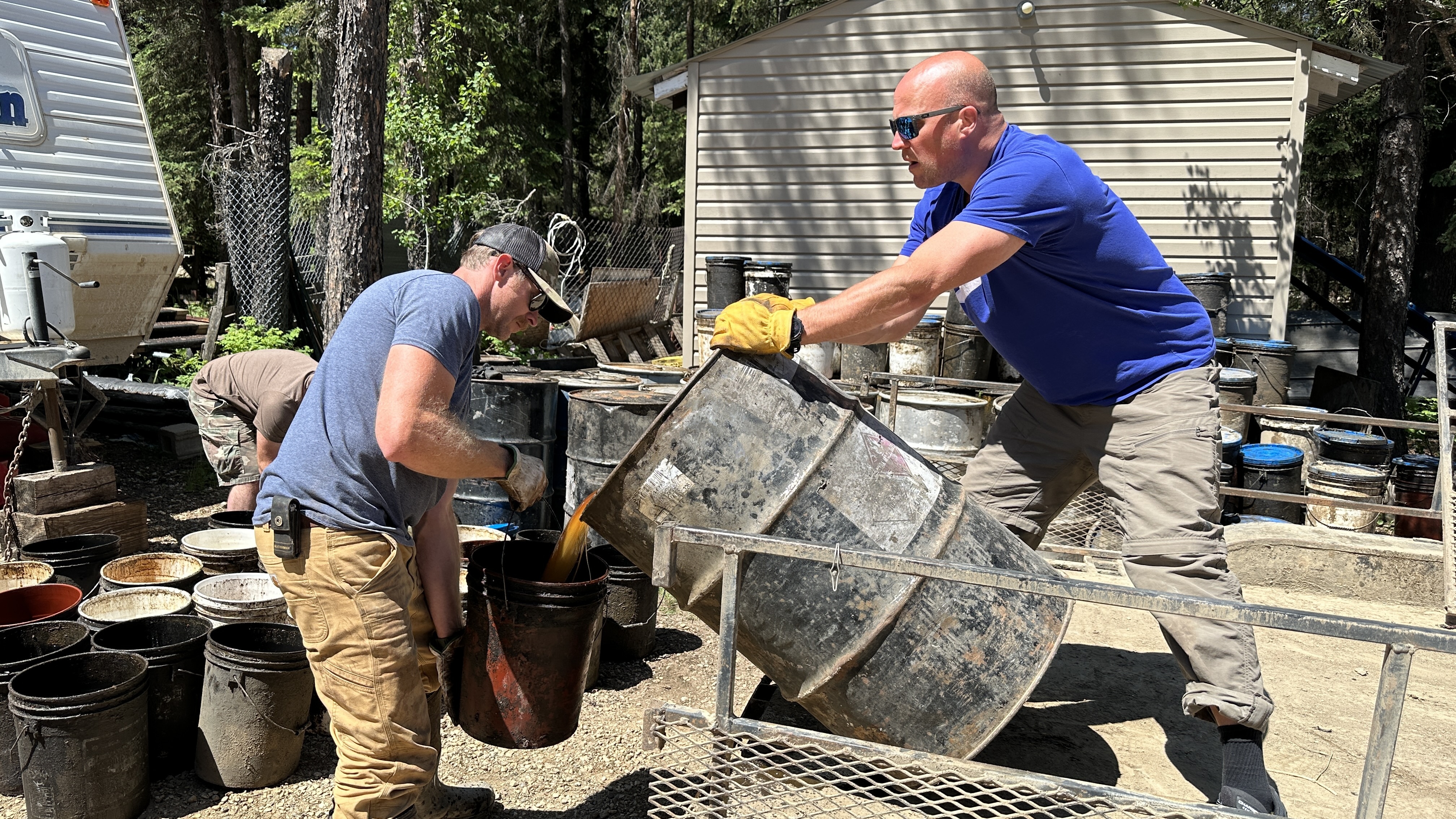
Stand Location: Setting Yourself Up for Success
Once I’ve found the perfect bait site and have everything set up, the next key decision is stand placement. For me, it starts with considering the prevailing winds for that time of year. In my experience, winds in spring typically come from the north-northwest and south, so I try to position my stand in a way that keeps my scent from blowing directly toward the bait site. Staying downwind is a simple but critical step in keeping your presence concealed from a bear’s powerful nose.
I’m also mindful of the sun’s positioning, especially during those long evening sits. It’s no fun having the sun blazing into your eyes the entire time — and more importantly, it can make it difficult to see an approaching bear, especially in the shadows of the forest. Choosing a stand location with this in mind helps improve visibility and makes for a more comfortable and effective hunt.
When it comes to distance from the bait, that depends a lot on your weapon of choice.
- As an archery hunter, I don’t see any reason to set a stand farther than 25 yards from the bait site — and honestly, I often set up even closer. Stretching that distance on an already challenging animal to hunt just adds unnecessary risk when it comes to executing a clean, lethal shot.
- For rifle hunters, a wider range works just fine. Anywhere from 20 to 100 yards can be an effective distance. But personally, one of my favourite parts of bear hunting is those close-range encounters — the intense moments when you can hear every breath and movement. For that reason alone, I’ll always lean toward getting in tight when possible.
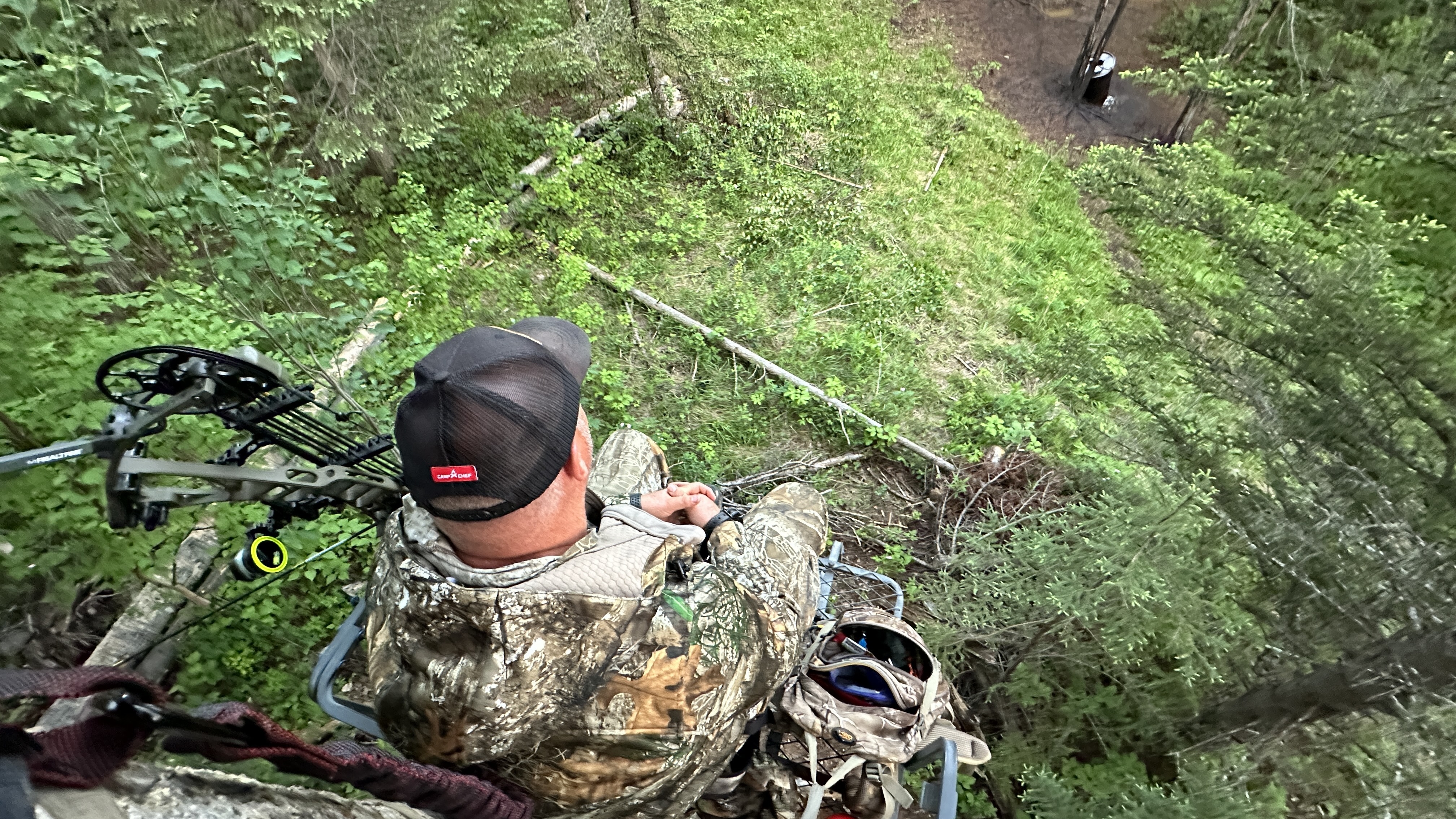
The Hunt: What to Expect
Now that your bear bait is set, the bears have found it, and the season is underway, let’s talk about what you can expect in the stand.
For me, bear hunting is one of the most thrilling and unique experiences in the woods — and it’s about far more than just the harvest. Having a front-row seat to observe these elusive forest ghosts is a privilege. Watching them move through the timber, interact with the bait site, and communicate with one another creates a hunting experience unlike any other.As you spend more time in the bear woods, you’ll start to recognize — and even understand — the many vocalizations bears use to communicate. From their woofs, huffs, jaw-popping, clacking, growls, moans, hums, bawls, cries, to the rare roar, it’s easy to find yourself completely enthralled by this remarkable species. The more time you spend observing them, the deeper your appreciation grows for just how intelligent and complex black bears truly are.
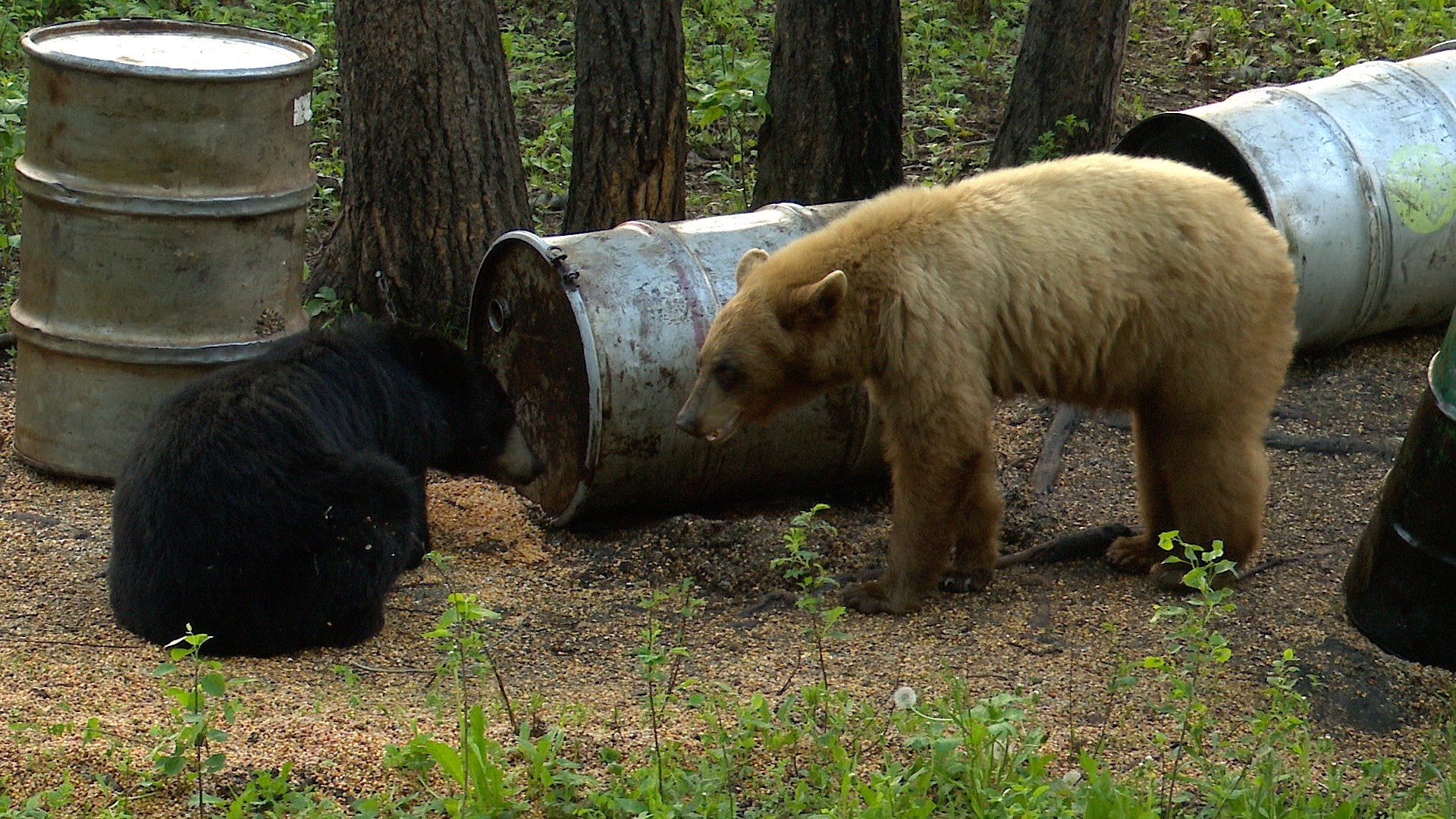

As the calendar flips to late May and into June, an entirely new energy enters the bear woods — the rut.
During this time, sows with yearling cubs will begin to push them off to live independently as they prepare to be bred. Sows with newborn cubs (born during the winter denning period) won’t be part of the breeding cycle this year, as black bears typically breed every second year to allow time to raise their young.
If you have a sow hitting your bait that has recently kicked off her yearling cubs, get ready — excitement is on the way. This is the period when big boars begin to drop their guard, roam more boldly, and cover ground in search of receptive sows. It’s not uncommon for a seemingly quiet bait to suddenly heat up with intense action as a boar trails a sow into the area.
If you see a lone sow arrive during the rut, stay sharp — there’s a good chance a mature boar isn’t far behind.

The Harvest: Shot Placement and Tracking: Making the Moment Count
When that all-important moment finally arrives, shot placement is everything. Whether you’re bowhunting or using a rifle, ensuring your shot is well-placed is critical to making a clean, ethical harvest.
- Archery Shot Placement
- For archery hunters, the common rule of thumb is to aim for the center of the center — the middle of the bear’s body when viewed broadside. A touch forward from center is fine, but you need to be mindful of the bear’s dense shoulder blade, which is incredibly strong and can stop an arrow cold, resulting in a non-lethal shot.
- Avoid taking shots at bears that are standing, sitting, or lying down, as these positions shift the placement of their vital organs and increase the risk of a poor hit. Instead, wait for the bear to present a broadside or slightly quartering-away shot. This angle gives your arrow the best chance to pass through both lungs and ensure a quick, humane harvest. When making this shot, ensure the bear's front leg is forward. Their shoulders have a lot of motion, and with that leg back at times, the shoulder will cover up the vitals.
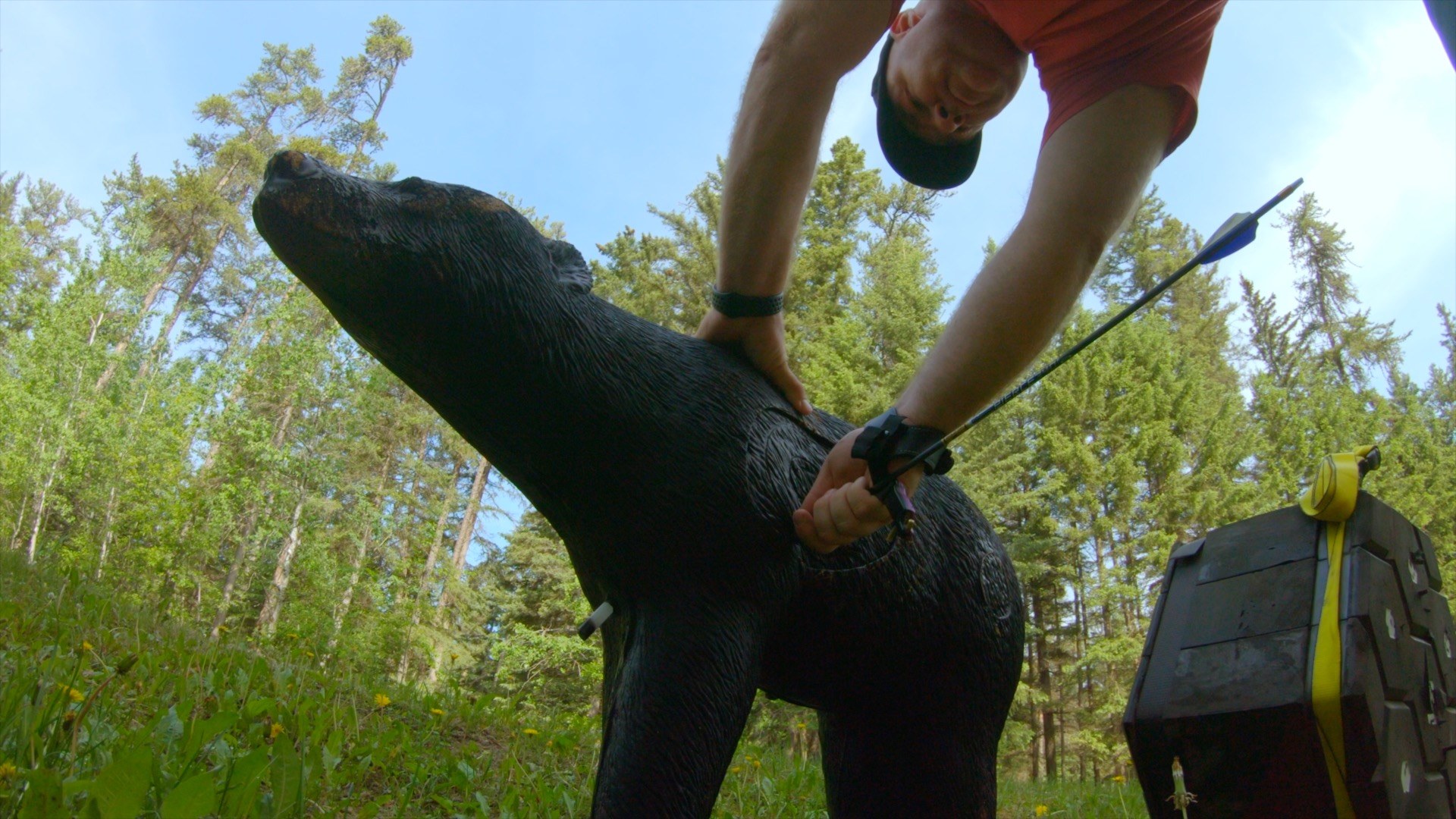
- Rifle Shot Placement
- For rifle hunters, the center of center approach also works well. However, many shooters will opt to aim slightly forward into the shoulder. With proper caliber and bullet choice, this often leads to a rapid drop and minimal tracking — an ideal outcome, especially in thick cover.
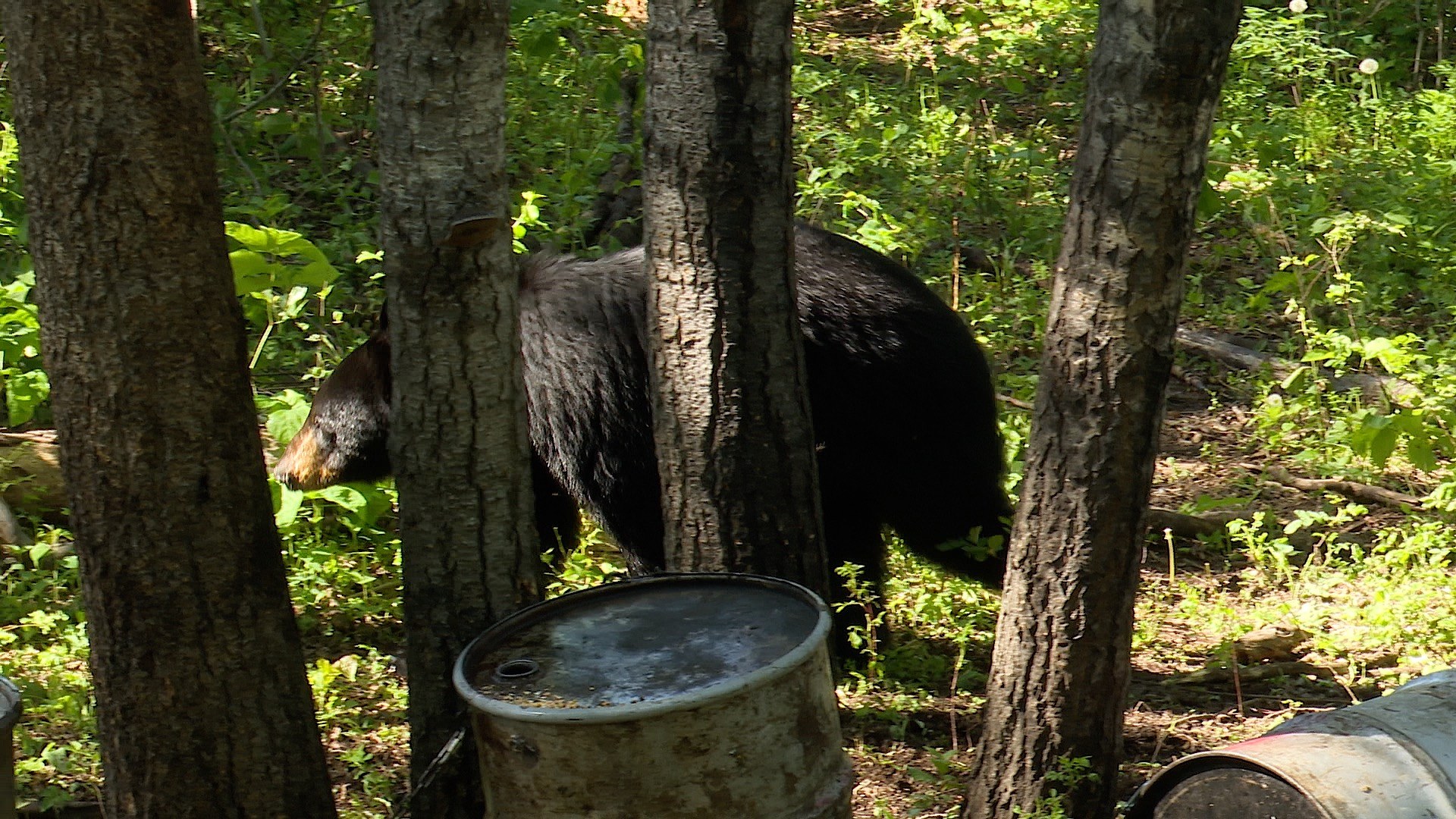
If you make a perfect shot and the bear runs into cover, listen closely. In many cases, a bear will let out a final moan just before expiring. If you hear this, it’s a strong indicator that your bear is down nearby. But don’t panic if you don’t hear the moan — it doesn’t happen every time, and dense terrain or distance may muffle the sound.
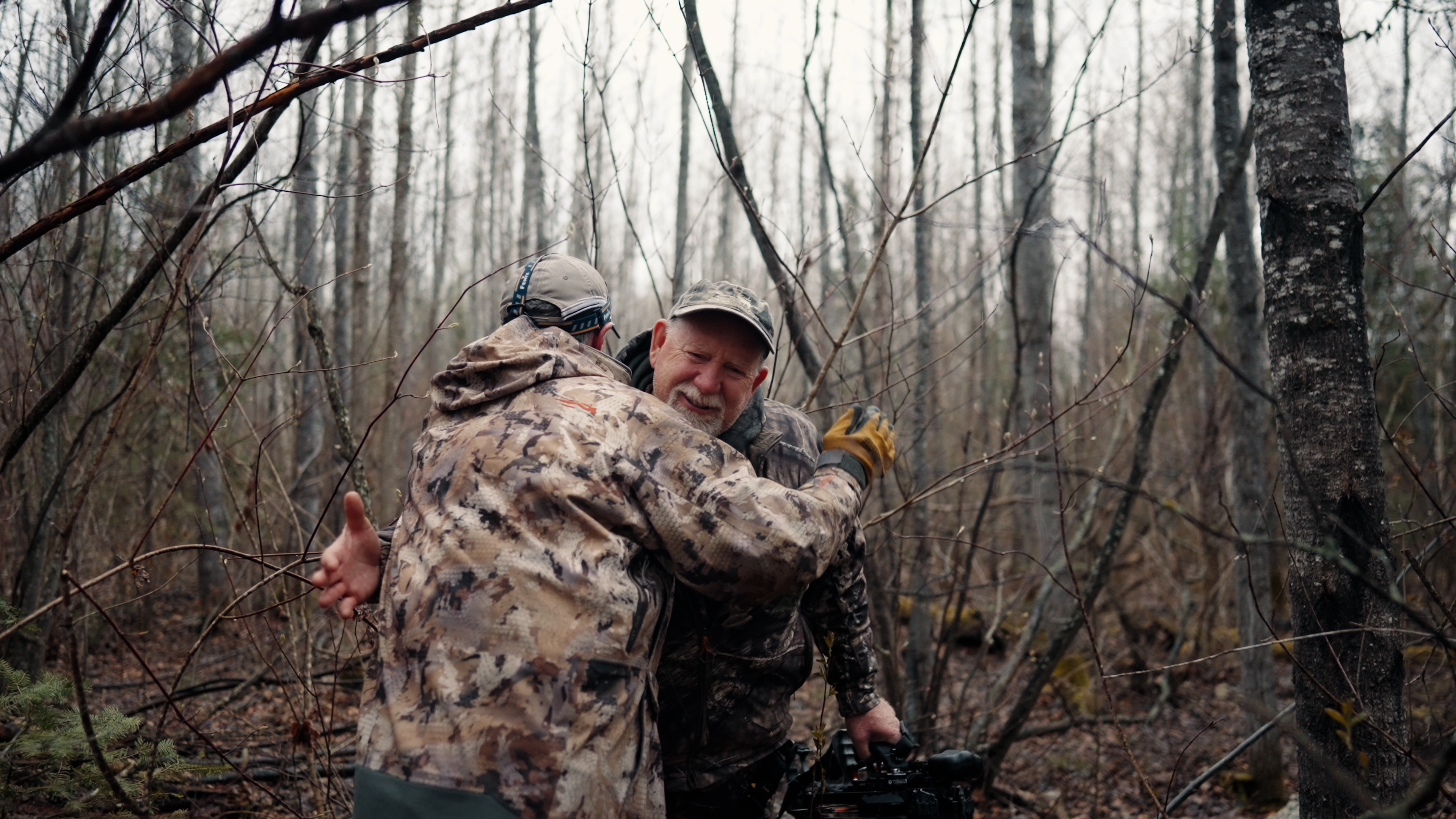
- Consider waiting until daylight when visibility is better and it’s safer to move through thick bush.
- Always carry a firearm for protection during recovery — wounded bears can be unpredictable.
- Bring a buddy to help track. Two sets of eyes (and noses) are always better than one.
Taking the time to track cautiously and safely not only protects you, but also ensures that every bear is treated with the respect it deserves.
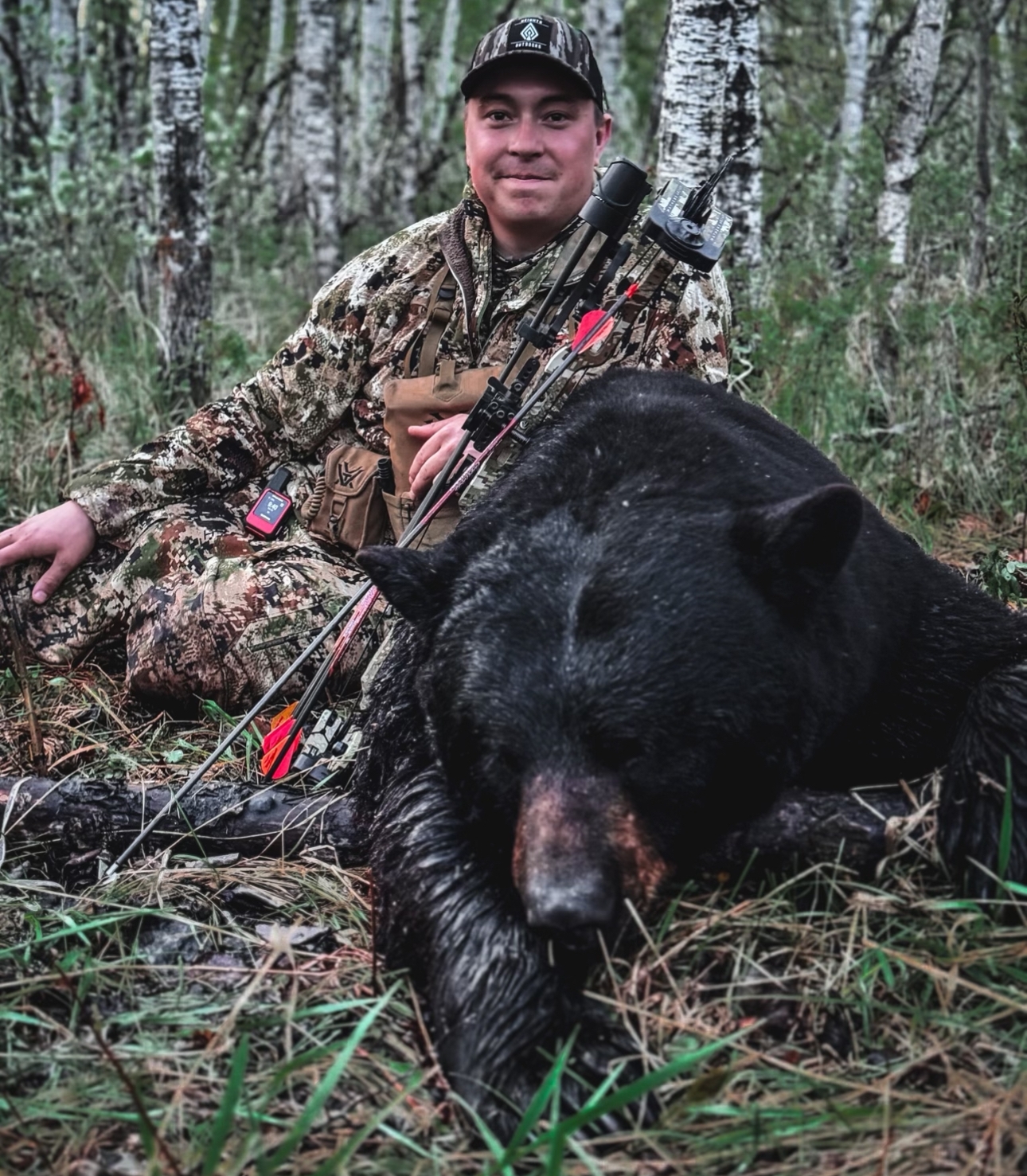
The Reward: Manitoba Black Bear as Wild Table Fare
When everything comes together and your tag is filled, you’re walking away with more than just a memory — you’re bringing home high-quality wild game that can feed your family for months. That’s one of the most rewarding aspects of bear hunting in Manitoba: the opportunity to harvest incredibly nutritious, flavourful meat straight from our wilderness.
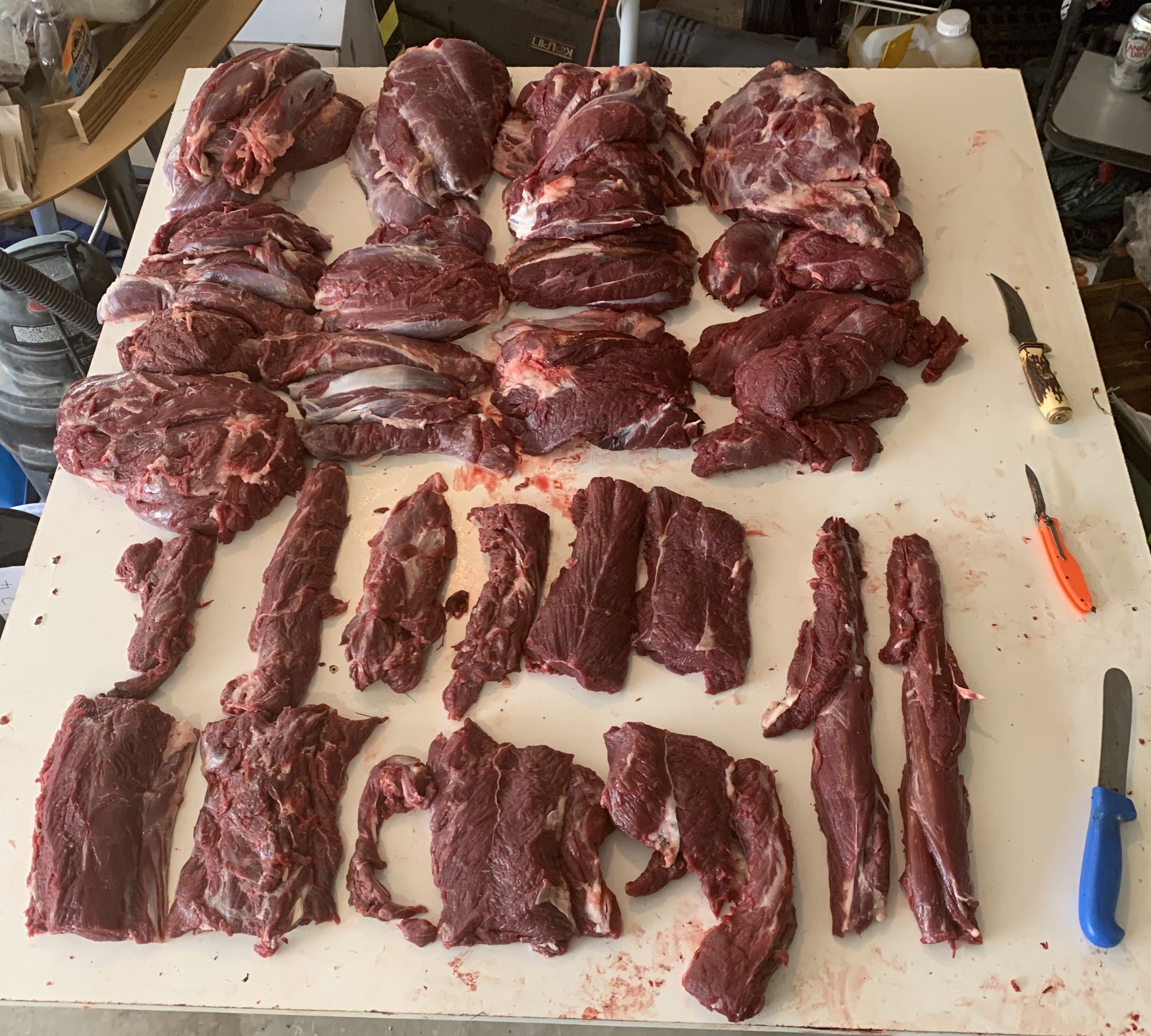
Black bear meat is often compared to beef or pork in texture, but with its own deep, rich flavour that lends itself beautifully to a variety of recipes. With proper care in the field and preparation in the kitchen, it becomes a true wild game delicacy.
Black Bear meat is ideal for:
- Slow-roasted shoulders and pulled bear sandwiches
- Rich bear sausage, especially when blended with pork fat
- Hearty bear chili, perfect for fall and winter days
- Rendering fat into bear grease, which is excellent for baking, cooking, or even seasoning cast iron
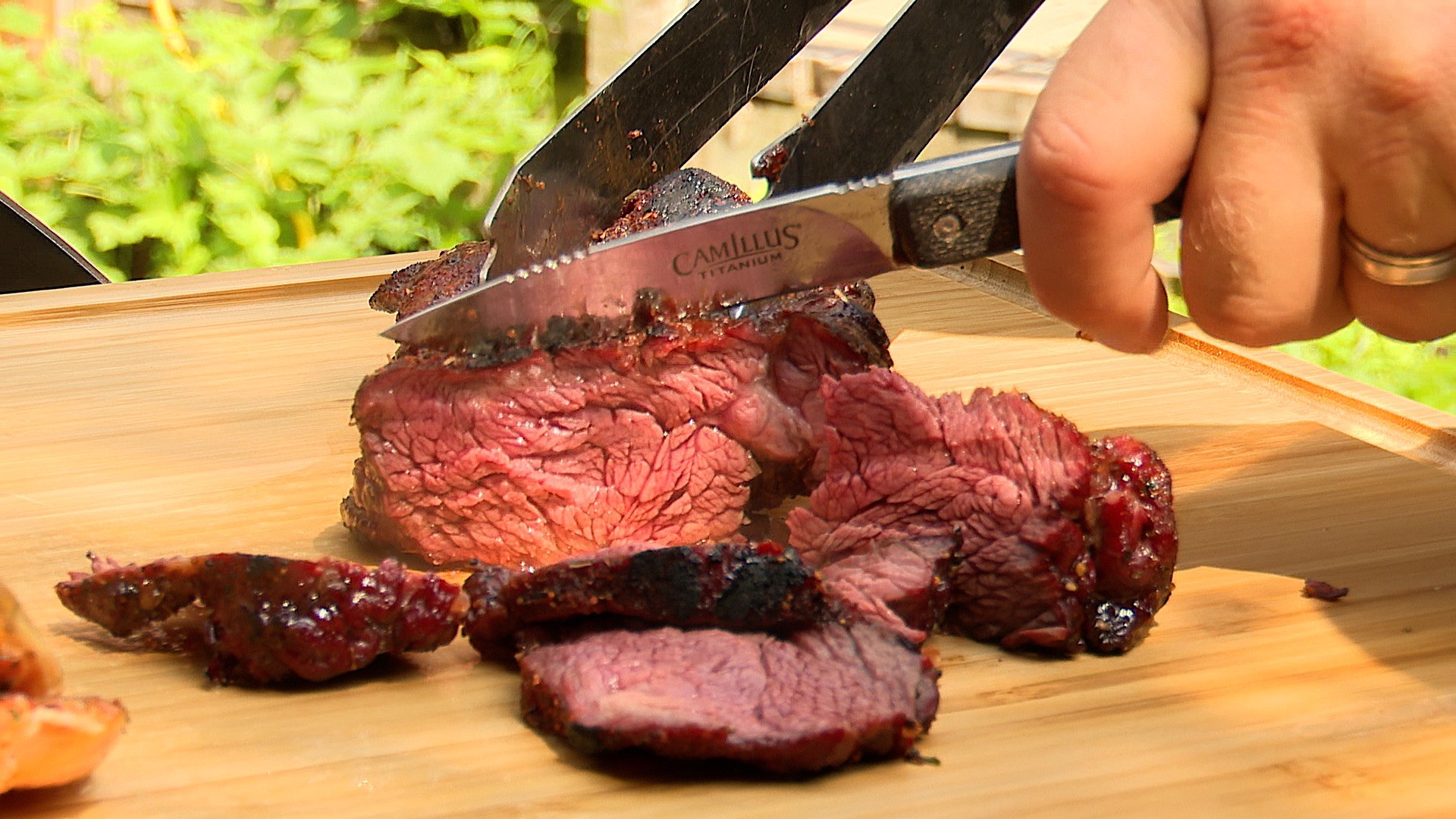
It’s a versatile protein that surprises many first-time hunters with just how good it really is. If you’re looking for ideas on how to prepare your bear meat, be sure to check out the HuntFish Manitoba YouTube channel, where we’ve got a growing collection of field-to-table bear recipes. From simple staples to creative wild game meals, there’s no shortage of inspiration for putting your harvest to good use.
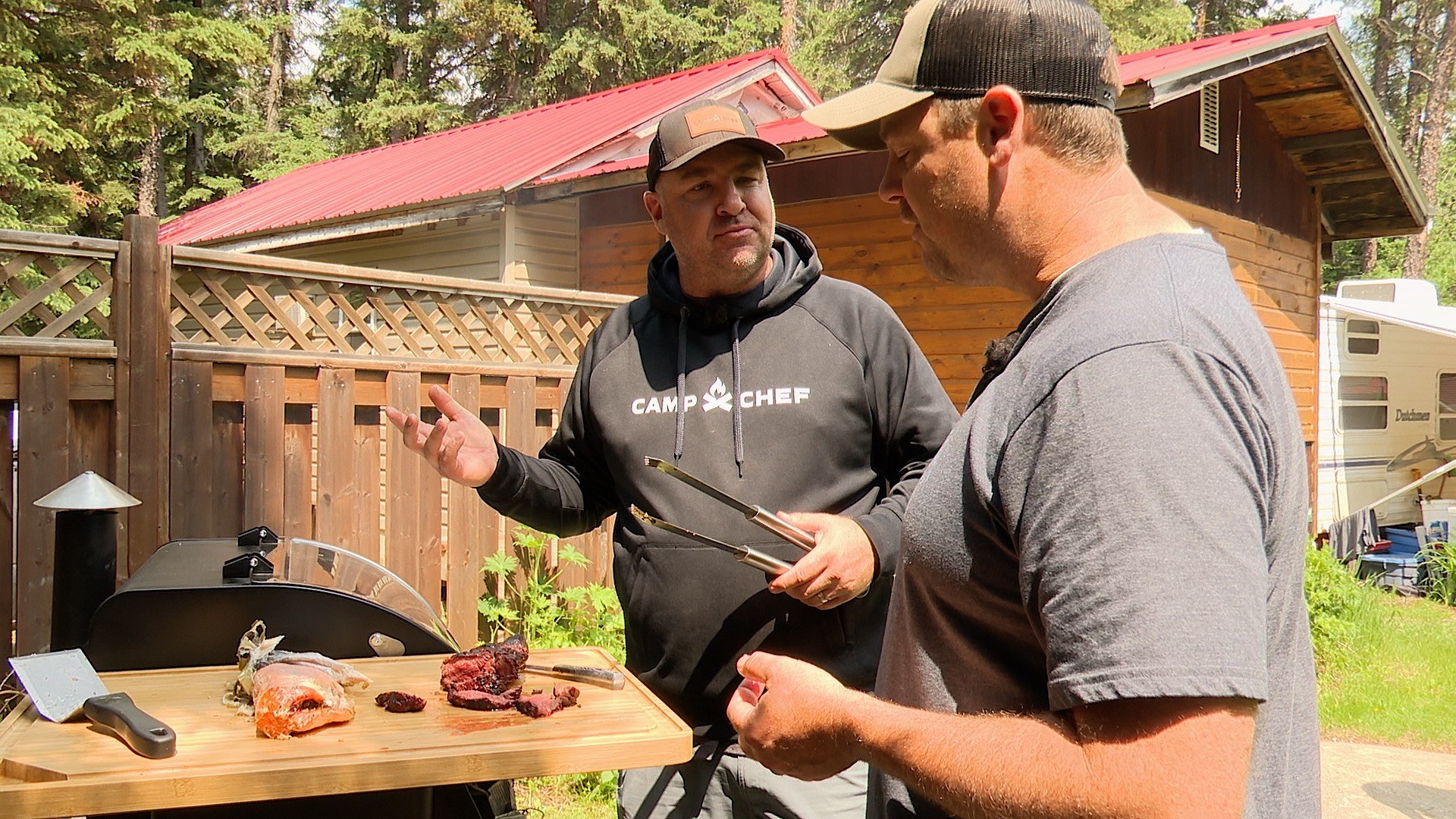
Important Tip: Bear meat must always be cooked to a safe internal temperature of at least 160°F to eliminate any risk of trichinosis. Slow and steady cooking methods are best — and they really bring out the flavour.
Final Thoughts: A Manitoba Opportunity Like No Other
As a Manitoba resident, you have access to some of the best black bear hunting in North America — right in your own backyard. From the rugged forests of the Duck Mountains and the Interlake’s endless bush to the remote stretches of the boreal north and the swamplands of eastern Manitoba, there’s no shortage of wild, untouched places to begin your bear hunting journey.
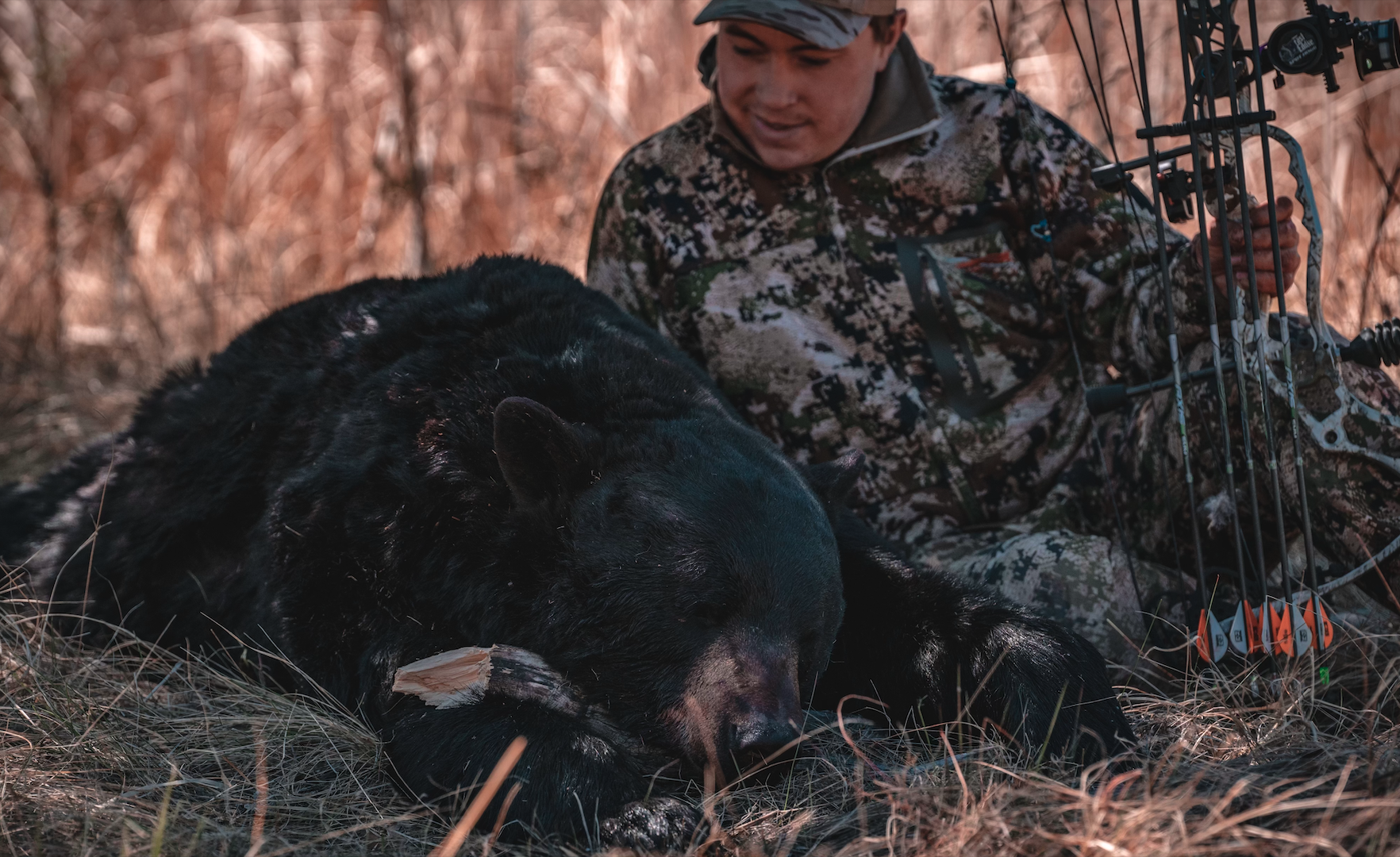
This is a hunt that offers far more than just the chance to fill a tag. It’s about the challenge, the preparation, the close encounters, and the opportunity to immerse yourself in the woods alongside one of our most iconic and elusive species. Whether it’s watching a bear vocalize at your bait site, learning to identify boars from sows, or enjoying your first taste of pulled bear from a successful harvest — the experiences you gain are as lasting as the meat you bring home.With the right approach, a focus on ethics, and an appreciation for every part of the process — from scouting to cooking — bear hunting can become one of the most memorable and meaningful outdoor pursuits you take on.
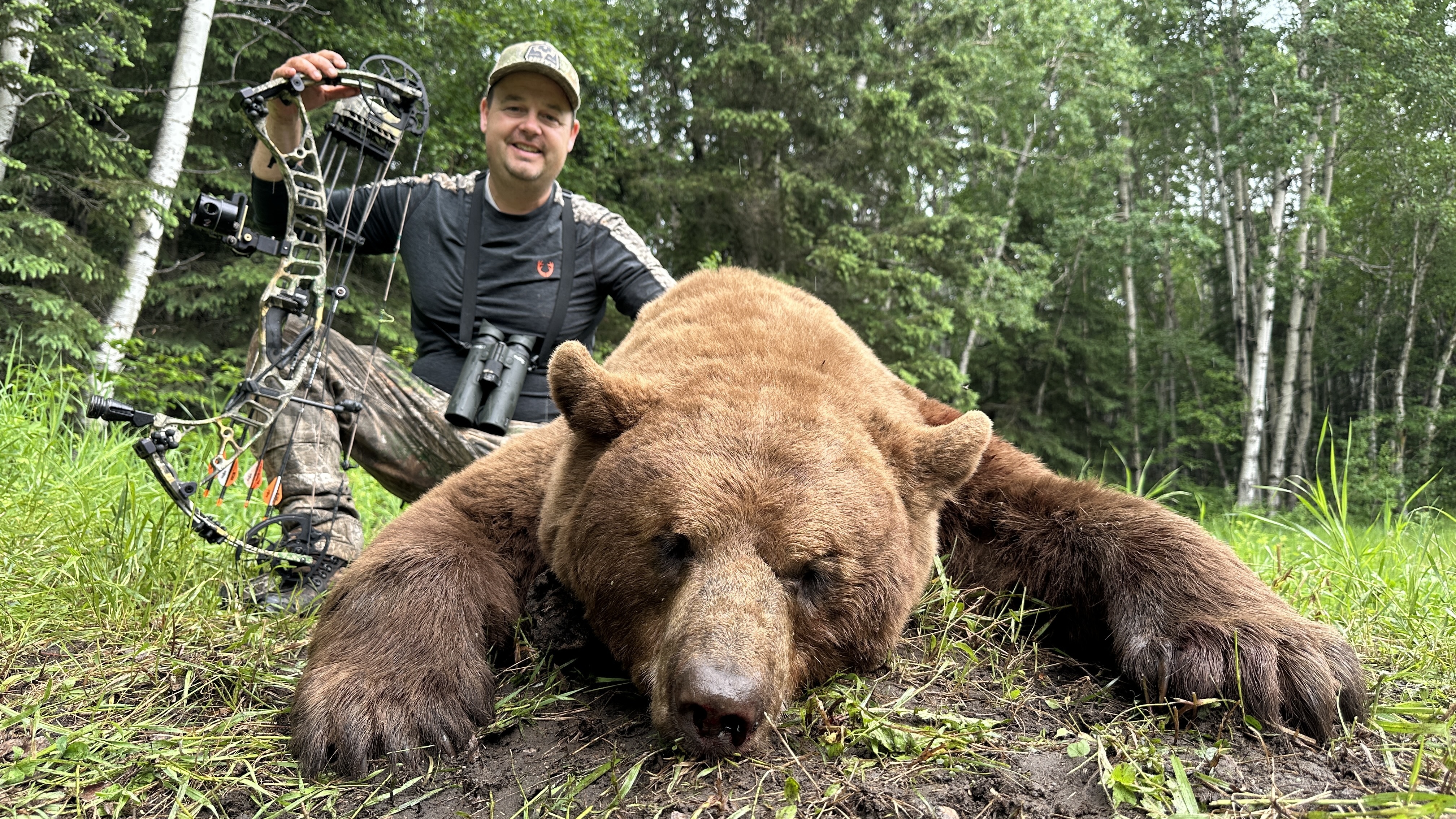
So if you’ve ever considered getting into bear hunting in Manitoba, now is the time. Respect the resource, embrace the responsibility, and enjoy the rich reward of wild game that connects you to the land like few other hunts can

And when you’re ready to cook up that harvest? Don’t forget to check out the bear recipe videos on the HuntFish Manitoba YouTube channel — we’ve got you covered from field to table.


